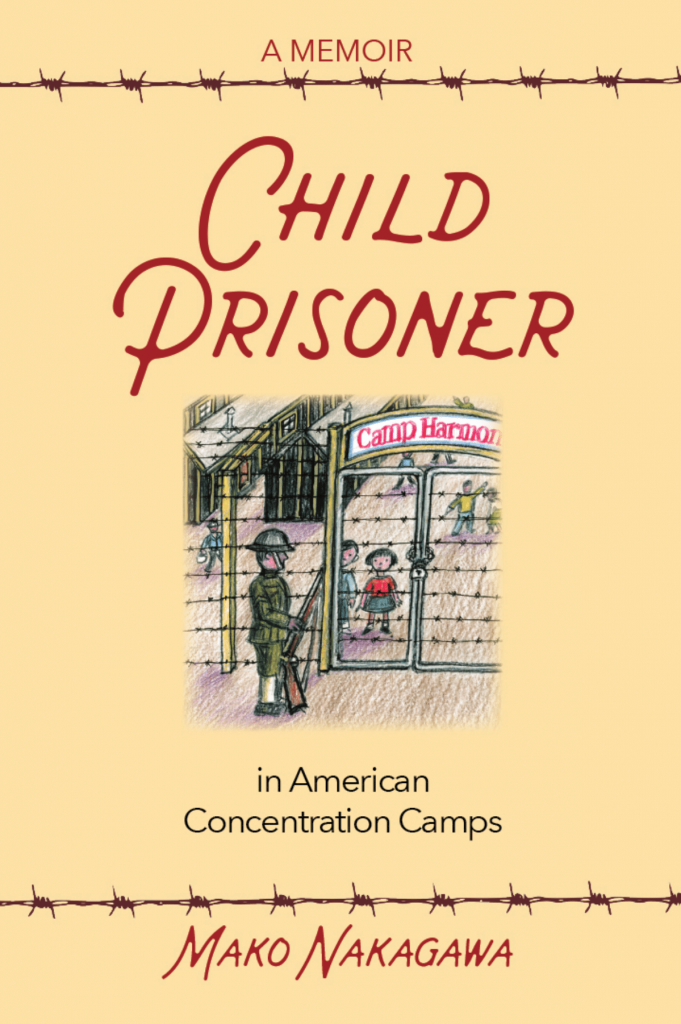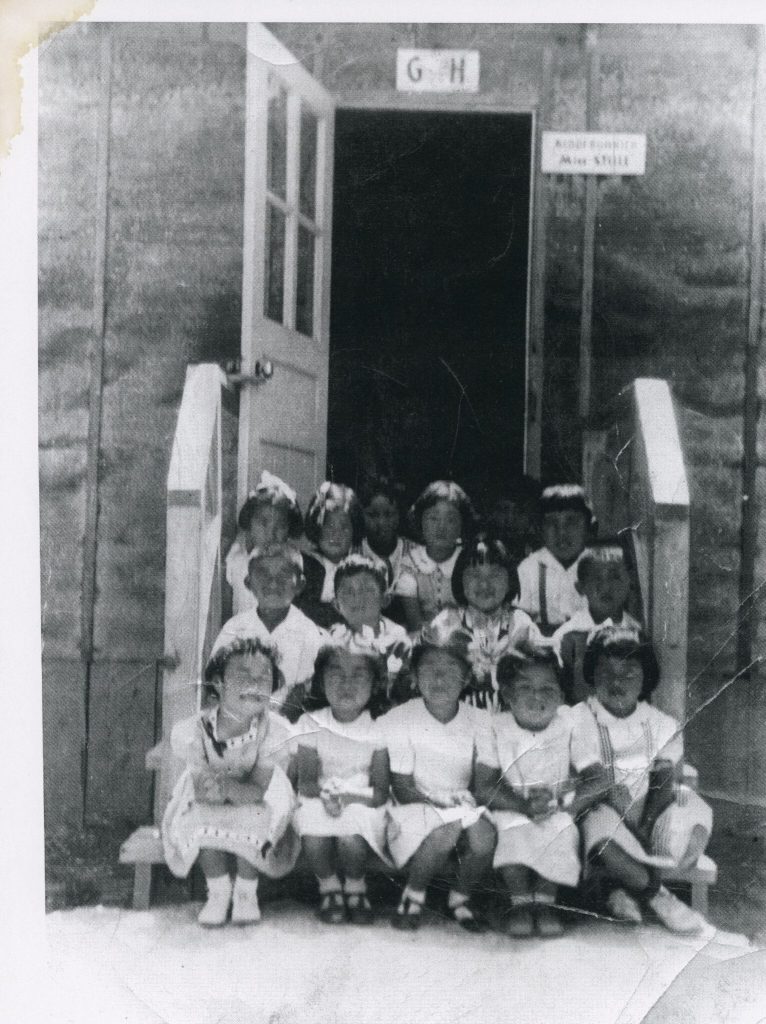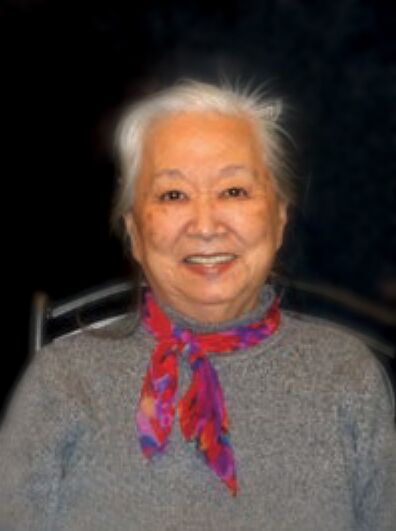Child Prisoner in American Concentration Camps
Mako Nakagawa
Original Illustrations by Mits Katayama

Paperback Original ISBN 978-0939165-74-2
270 Pages, $17.00, Includes 4-color original illustrations & historic photos
E-Book ISBN 978-0939165-75-9

When Mako Takahashi was five years old, her family was swept up in the turmoil and devastation of World War II. The FBI arrested Mako’s father without explanation from their Seattle home in 1942 and two months later, the U.S. government forced Mako, her mother, and three sisters from their home and imprisoned them in a concentration camp. They were incarcerated along with nearly 120,000 others of Japanese ancestry living on the West Coast, many of them U.S. citizens. For four years, Mako and her family were held against their will in three different concentration camps.
Nearly 80 years later, Mako Nakagawa completed her memoir, Child Prisoner in American Concentration Camps, which describes this life-altering injustice she endured as an innocent child and how it has affected her throughout her adult life. Alarmed by the backlash after September 11, 2001, Nakagawa recognized that the United States was once again on the precipice of repeating history—this time focusing on Middle Eastern people. She writes in the Afterword of her memoir:
“Stories from the Muslim, Arab, and Sikh communities in the United States had a ring that was much too familiar. Children were called names at school, Middle-Eastern looking people were spit on, harassed, fired from jobs, and their property vandalized. Our Japanese American stories from the 1940s and the stories from the newly targeted communities are frighteningly familiar; there was a feeling of déjà vu.”
Mako Nakagawa worked on her memoir for more than ten years, realizing she needed to share her story in the hopes that history would not repeat itself. In Child Prisoner, she weaves her adult understanding of the racism and mistreatment of Japanese Americans during World War II with her childhood memories of living within barbed-wire camps. Her memories are sometimes playful, describing the strange benjos (bathrooms) in the camps, and at other times confusing, recalling being sexually abused by a friendly “father-type.”
Nakagawa’s brother-in-law, Mits Katayama, also imprisoned in American concentration camps, later became a well-established Seattle illustrator. He was inspired by Nakagawa’s writings and created original illustrations to accompany her childhood stories.
Along with Nakagawa’s childhood memories, she offers explanations and insights as an adult looking back on this grave injustice. She is particularly attentive to avoiding euphemisms that are historically used to describe the U.S. incarceration of Japanese Americans. Instead of using words such as “internment camps,” “evacuations” or “living quarters,” Nakagawa accurately describes them as “concentration camps,” “incarcerations” and “horse stalls.” As Nakagawa states in her Prologue, “Words are important. Being honest about what happened has taken a long time.”
Nakagawa also describes her family’s struggle to re-establish their lives in Seattle after the war. The aftermath of this incarceration weighed on her family for a lifetime, financially and psychologically. In the Afterword, Nakagawa writes about her elderly father preparing to testify at a public hearing before the Commission on Wartime Relocation and Internment of Civilians. She also outlines distinct comparisons between U.S. prejudices against Japanese Americans in the 1940s and those of Middle Eastern families facing similar discrimination more than 40 years later.
Praise
Child Prisoner in American Concentration Camps is a wonderful read. It chronicles Mako Nakagawa’s life story through her eyes as a bewildered five-year-old Japanese American child trapped in three American concentration camps and later, her lifework as an educator concerned and involved with the civil rights of all Americans. For many, she has become a community heroine for her years of work advocating for justice. Mako’s childhood remembrances of her concentration camp experiences evoke smiles, sadness, and understanding of her family’s four-year travail and the community’s healing process that took forty years to materialize. Some of her stories as a child are especially wonderful to read out loud to school-aged children.
Tetsuden Kashima, Professor Emeritus, University of Washington
Written with compassion and sprinkled with humor, Mako Nakagawa is a masterful storyteller. Through the eyes of a young girl, but with the life experience of an adult, Mako’s stories draw into perspective a tragic chapter in American history, while the innocence of the child touches the heart. Ultimately, by sharing her stories Mako exemplifies her social justice mantra: “Head, Heart and Hand.” Consider the facts, listen to your heart and when the need arises, lend a hand. Child Prisoner is a timely memoir and reading it will strengthen the reader’s resolve to never let such an egregious wrong be repeated.
Karen Yoshitomi, Executive Director, Japanese Cultural & Community Center of Washington
Mako Nakagawa has written a poignant book that tells of the incarceration of Japanese Americans during World War II through her eyes as a five-year-old child. Through those eyes―as well as the book’s clear, simple language and striking, at times whimsical, illustrations by Mits Katayama―Mako shares with readers not only the uncertainty, fear, and hardship of the incarceration and two-year separation from her father, but also the humor and absurdity in the worst of times that sometimes only children can see. That perspective allows readers to understand this important chapter in our nation’s history, but, more importantly, to be aware of the real, human cost of prejudice and the separation and imprisonment of families.
Lorraine Bannai, Director, Fred T. Korematsu Center for Law and Equality,Seattle University School of Law

About The Author
In 2018, Mᴀᴋᴏ Nᴀᴋᴀɢᴀᴡᴀ celebrated her 81st birthday and completed her memoir—it was a memorable year for her! Her book is based on her original manuscript of stories for young readers, Camp Child, self-published in 2007. Her brother-in-law Mits Katayama, a well-established commercial artist, created original illustrations to accompany Mako’s stories.
Nakagawa worked as an educator for several decades and raised her three children. During that time, she was a school teacher and a principal as well as the Program Director for Seattle Public School’s Ethnic Cultural Heritage Program (RAINBOW). She specialized in multi-cultural education. Her unjust incarceration as a child and her passion as an educator inspired her to help develop a national curriculum for multicultural education. For many years, she gave numerous presentations, classes, and workshops for organizations, teachers, and students—from elementary school through college— on her experiences as a child prisoner in her own country.
Now in her 80s, Nakagawa is retired and lives in Seattle near her adult children.

